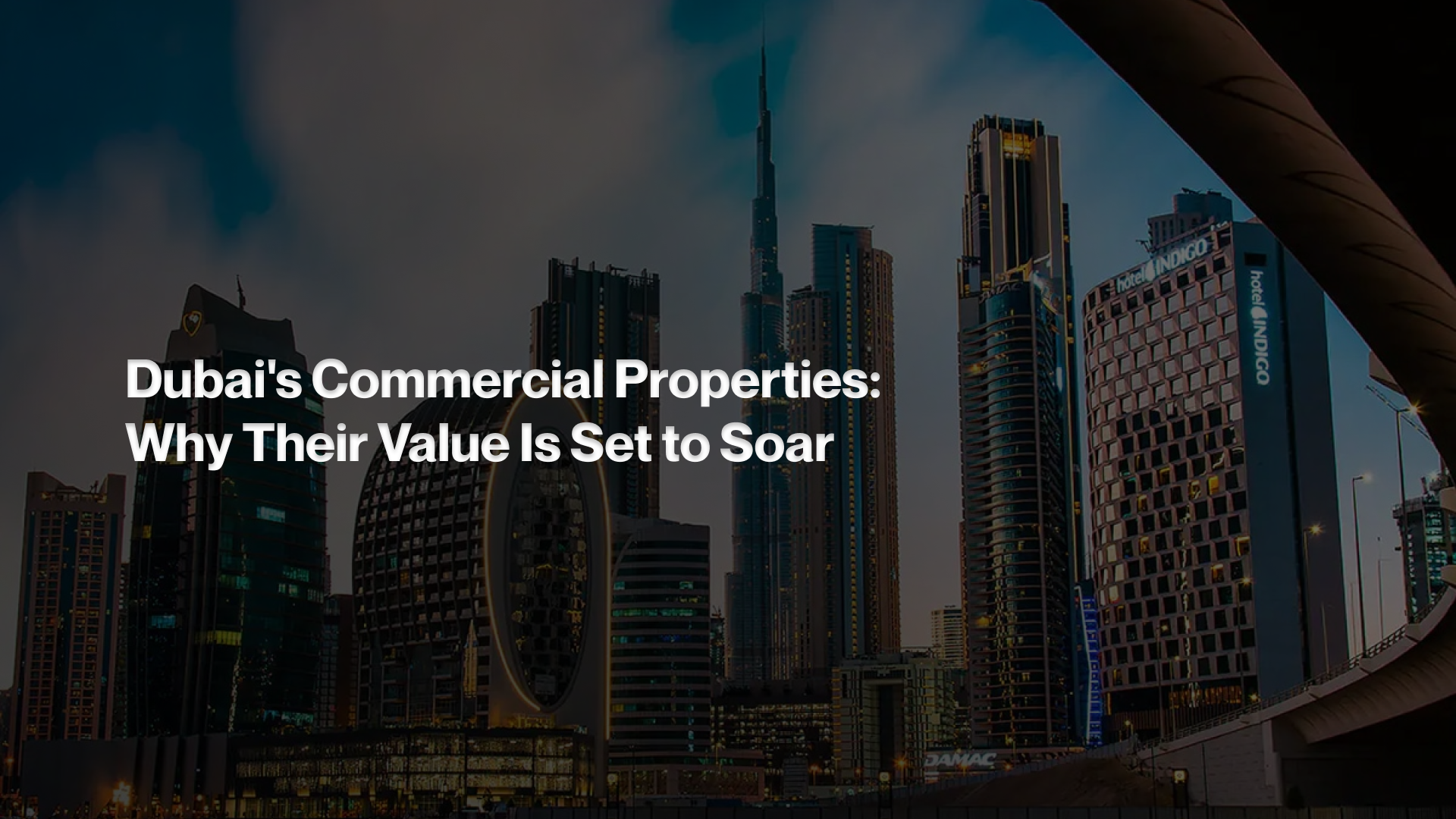
Commercial properties in Dubai are poised for stronger value growth than many residential segments, driven by limited supply and robust demand from global businesses. Industrial and logistics facilities, Grade A offices, and data centers are experiencing particularly sharp rental increases as e-commerce, trade, and digital transformation expand. Unlike residential real estate, which has seen a wave of new project launches, high-quality commercial developments remain relatively scarce. This imbalance is pushing up occupancy rates and lease terms, especially in prime locations such as DIFC, Downtown, and free zones like JAFZA and Dubai South. Investors are also targeting mixed-use and flexible office spaces, where hybrid work trends are boosting demand. With foreign companies relocating regional headquarters to Dubai and government initiatives attracting global capital, commercial assets are delivering stronger yields and long-term appreciation prospects, making them one of the most attractive real estate investment classes in the current market cycle.
Undersupply of Commercial Properties vs. Residential
Dubai faces a notable undersupply of high-quality commercial properties compared to its rapidly expanding residential sector. While thousands of new apartments and villas are launched annually, Grade A offices, warehouses, and specialized facilities like data centers are being delivered at a much slower pace. This supply gap creates intense competition for prime commercial space, driving up rents and boosting asset values. Businesses expanding into Dubai—particularly multinational firms and e-commerce operators—seek modern, efficient properties, but limited availability keeps vacancy rates low. In contrast, abundant residential supply has kept pricing growth more balanced, highlighting commercial real estate’s stronger investment potential.
Limited Supply of Ready Units
In Dubai’s commercial market, the supply of ready units is very limited, especially in Grade A offices, warehouses, and data centers. Most upcoming stock is still under construction, meaning businesses and investors seeking immediate occupancy face stiff competition. This scarcity of completed, high-quality space is pushing up both rental rates and sale prices, as companies prioritize operational speed and cannot wait for off-plan deliveries. In contrast, the residential sector continues to see abundant ready and near-ready inventory. The imbalance reinforces commercial real estate’s resilience and strong capital appreciation potential, particularly for prime, move-in-ready properties in key business districts and free zones.
Population Growth Drives Commercial Demand
As Dubai’s population continues to grow, the demand for commercial properties is expected to rise sharply. A larger population drives greater consumption, boosting the need for retail spaces, offices, warehouses, and service facilities. Businesses must expand to meet this demand, yet the supply of high-quality commercial units—especially ready Grade A offices, logistics hubs, and mixed-use developments—remains limited. This imbalance will push rents and asset values higher, particularly in prime business districts and free zones. Unlike residential real estate, where new projects launch frequently, commercial space is slower to develop, positioning it as a strong investment class in a rapidly growing city.
Scarcity of 100% Commercial Hubs
Dubai has a limited supply of fully dedicated commercial hubs, as much of the city’s development over the past decade has focused on mixed-use or residential-led projects. Purpose-built business districts like DIFC, Business Bay, and Dubai South are nearly saturated with high occupancy, while new purely commercial zones are being delivered at a slower pace. This scarcity of 100% commercial communities—offering consolidated office, retail, and logistics ecosystems—creates strong competition for available space, driving both rents and capital values higher. As demand from multinational firms, e-commerce operators, and regional headquarters grows, these true commercial hubs are becoming premium investment opportunities with long-term appreciation potential.
The Evolution of Commercial Units
Dubai’s commercial real estate is embracing modern, flexible, and sector-focused concepts to meet evolving business needs.
Serviced and co-working spaces are replacing traditional office towers, catering to startups and corporates adopting hybrid work models.
Mixed-use projects integrate offices, retail, hospitality, and residences, creating live–work–play environments in prime districts.
Buildings are now tech-enabled, energy-efficient, and sustainability-certified, reducing operational costs and appealing to global tenants.
Additionally, specialized premises such as logistics hubs, cloud kitchens, and data centers are being developed to serve high-growth industries.
These innovations make Dubai’s commercial properties more adaptable, resilient, and attractive to investors and occupiers alike.
A New Benchmark: Luxurious Commercial Units
Dubai is introducing a new concept of luxurious commercial units, combining premium design, high-end finishes, and world-class amenities typically seen in luxury residences. These units cater to elite businesses seeking prestige, comfort, and a strong brand image in prime locations. Features include spacious layouts, private terraces, concierge services, smart technology, and wellness facilities, creating a sophisticated work environment. Unlike traditional offices, these luxurious commercial premises emphasize experience, exclusivity, and status, appealing to multinational corporations, high-profile startups, and boutique firms. This new segment is expected to attract significant investment and set a benchmark for upscale commercial real estate in Dubai’s most sought-after business districts.
Investing in this new, high-end commercial segment requires specialized knowledge and market access. To explore prime opportunities and get ahead of this emerging trend, connect with a fäm Properties commercial real estate expert today.